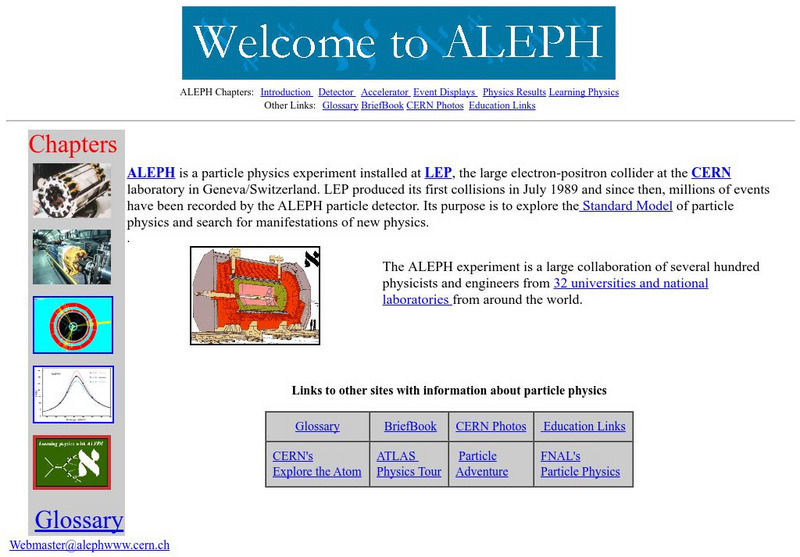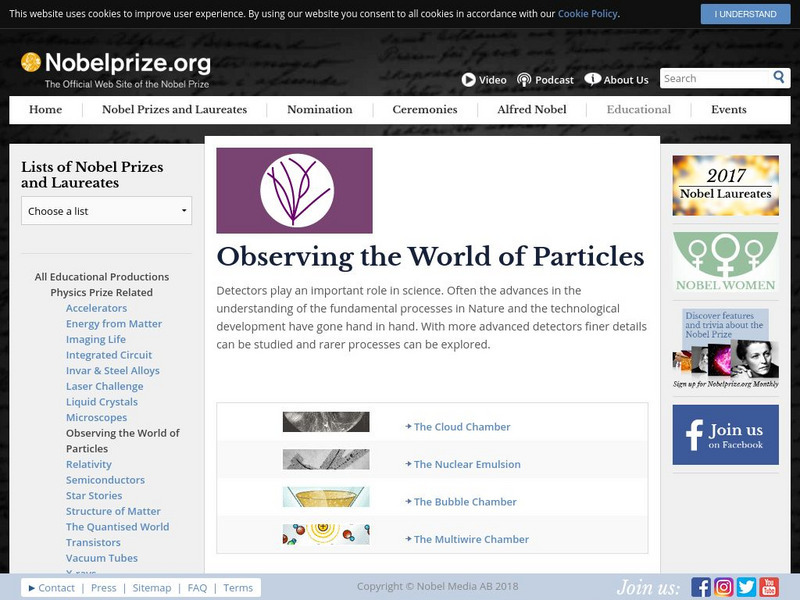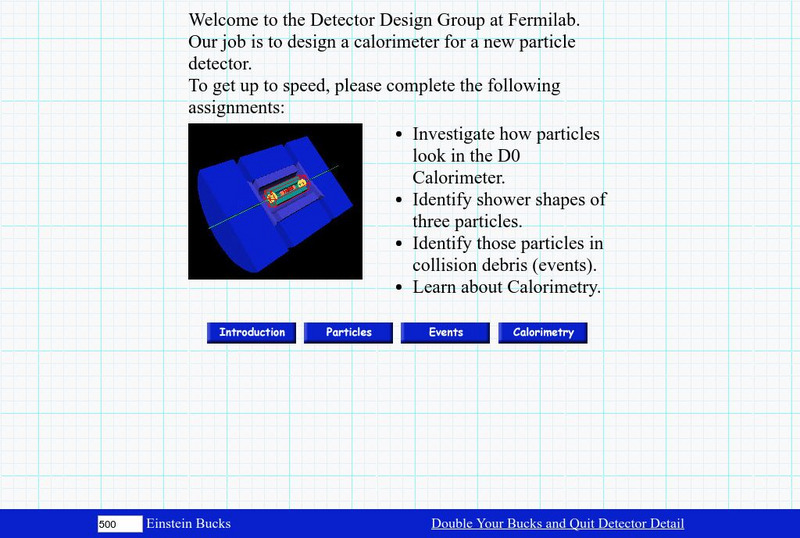Other
Cern: The Aleph Experiment
This is the home page of the ALEPH experiment at CERN. The basic operation is easy to follow, but the physics is more advanced.
Other
Cern: The Opal Experiment
This is the home page of the OPAL experiment at CERN. The basic tour showing the operation of the detector is easy to follow. The physics is more difficult.
Other
The Atlas Experiment: Mapping the Secrets of the Universe
Everything you want to know about ATLAS, "a particle physics experiment at the Large Hadron Coliider at CERN." The ATLAS website answers questions including, "What is the schedule of the ATLAS experiment?", "How big is ATLAS?", "Are...
Symmetry Magazine
Symmetry Magazine: Explain It in 60 Seconds: Particle Event
Particle events, described in this article, are events that can be observed with a particle detector. "Explain It In 60 Seconds" is an article series that aims to summarize in a few paragraphs the meaning of different concepts in...
Other
Identifying Interesting Particle Events at Lep
This site teaches students how to identify partical physics interactions, or "events." The events have been seen using an experiment called OPAL at CERN near Geneva.
Other
Cern: The Delphi Experiment
This is the home page of the DELPHI experiment at CERN. It provides links to various parts of the experiment and explains the operation of the detector. The general operation is explained at a basic level, but the physics is much more...
National High Magnetic Field Laboratory
Magnet Academy: Oil Drop
It may look like a simple black blob, but an oil drop is in fact a phenomenally complex mix of immense molecules called hydrocarbons. Using a type of mass spectrometry called FT-ICR, scientists can analyze oil and other macromolecules...
American Museum of Natural History
American Museum of Natural History: Case Study: Neutrino Observatories
Observatories allow for study of subatomic particles, neutrinos, which are found nearly everywhere in the universe are featured in this case presented by the American Museum of Natural History.
Nobel Media AB
The Nobel Prize: Observing the World of Particles
After some brief background information on detectors, this site breaks into information on the cloud chamber, the nuclear emulsion, the bubble chamber, and the multiwire chamber.
Other
Fermilab: Detector Detail
How do scientists capture and measure the energy in atomic particles? Learn about the design of a calorimeter and how it measures the energy of the atomic particles passing through it.
Other
Fermilab: Play Particle Pool
Simulate what scientists see in a bubble chamber by playing "particle pool". You'll set up balls and cause collisions while a video monitor records the ghost paths of each individual ball. You'll also predict patterns that will result...
Lawrence Berkeley National Laboratory
Berkeley Lab: Detectors
Exploration of the different types of commonly used detectors with a description of each.
Other
Cern: The Particle Detector Briefbook
A glossary of terms used in experimental particle physics. Claims to be a "handbook" or "briefbook" for all of the complicated concepts found in particle detection.
Other
Cern: The L3 Experiment
This is the home page of the L3 experiment at CERN. The basic detector description is easy to follow, but the physics is more advanced.













